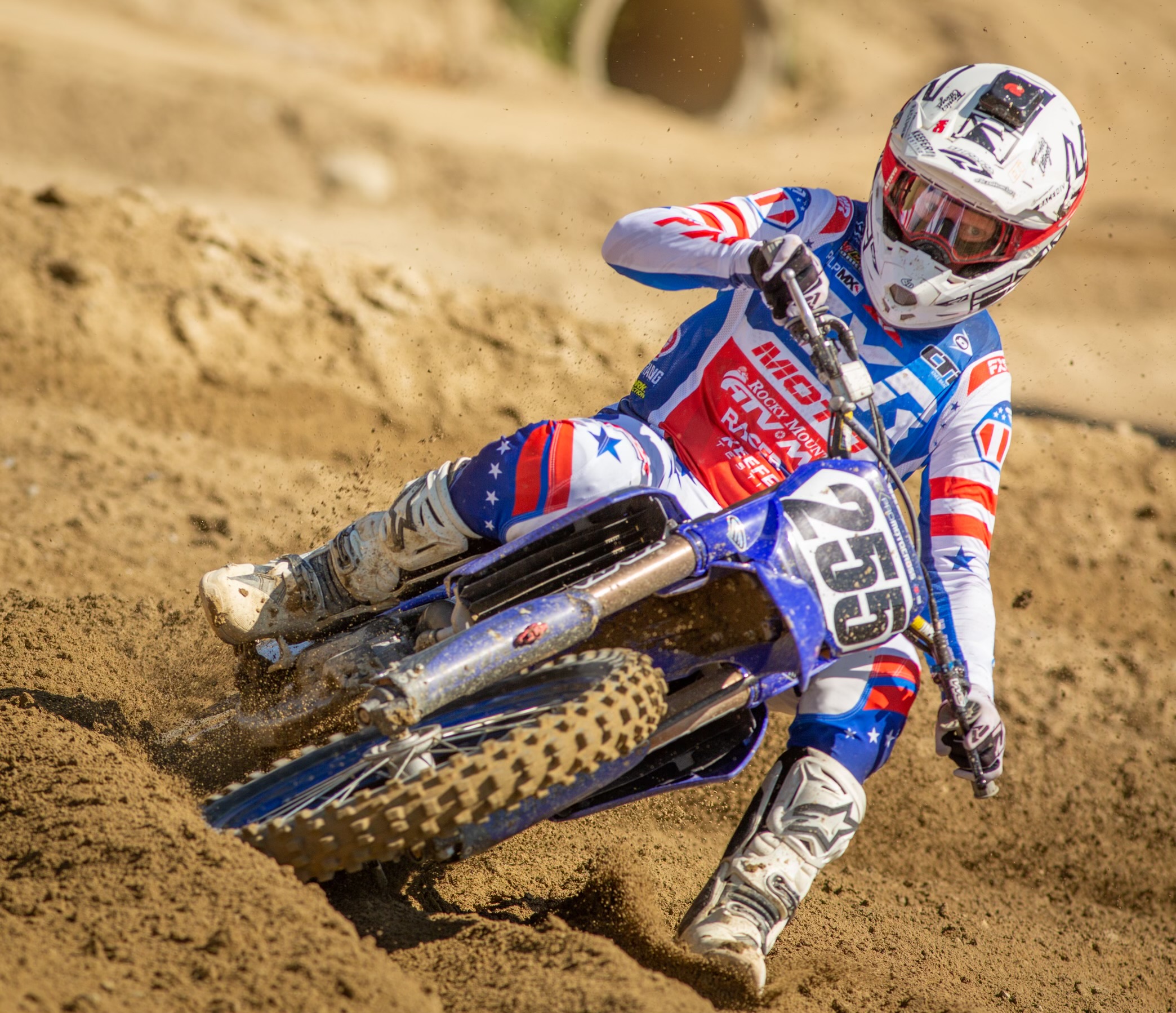In 2022 I didn’t mess with the offset on the YZ450F as it had plenty of stability for me and felt secure on the edge of its tires. For 2023 the YZ450F is much better at cornering, feels lighter and more nimble, but the confidence on the edge of tire is just not there for me. Unless you live in a place where there is grippy/tacky dirt, nice ruts and you never have to be on the edges of your tires, this article may not need to require your time. But… If you live in a place where the ruts aren’t that deep, is fast with square edges, where traction comes and goes and you’re constantly moving from left to right on the track, this article should be helpful. Hell, I feel like even if you have mass amounts of traction and longer ruts with bumps inside them, this article might be for you!
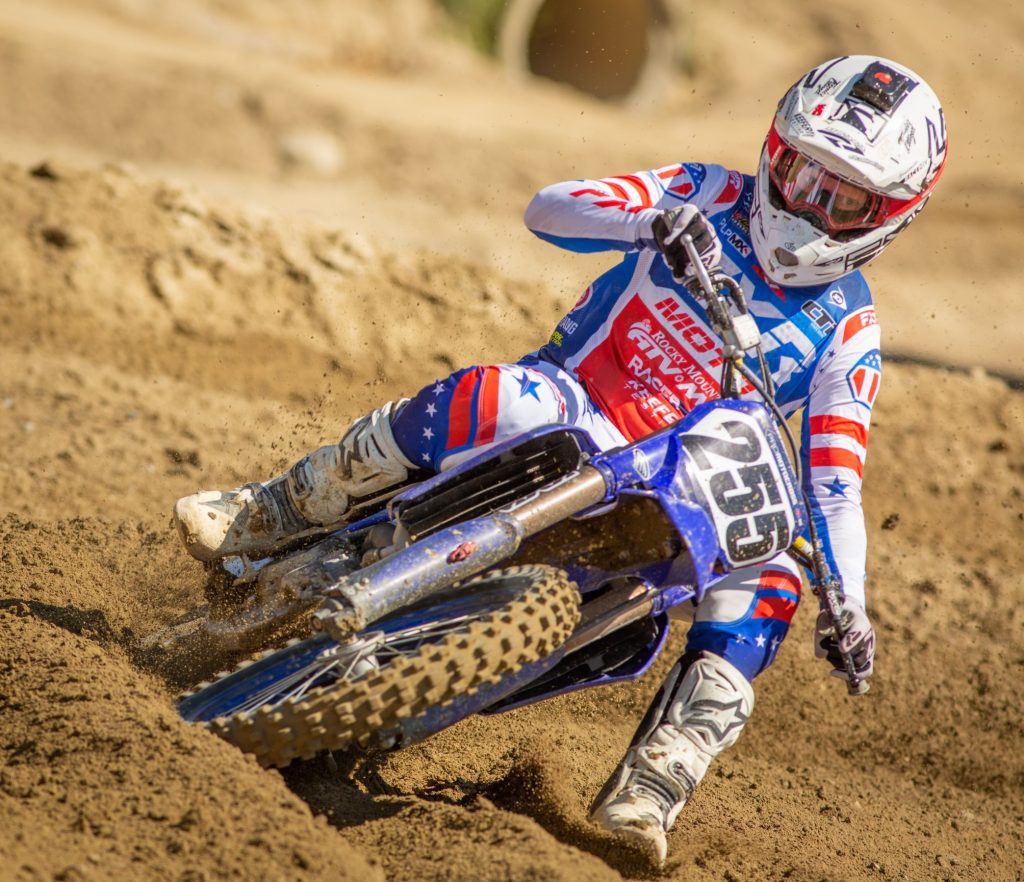
What I Tried:
I went through several offset changes and used two different types of clamps (X-Trig and Ride Engineering) and came away with some different opinions on what you might need for your area/type of riding. I tried 22/23/23.5/24/25mm offsets and below are some of the highlights of each.
What is odd is that I stumbled across this as I had a set of X-Trig ROCS clamps for my 2022 YZ450F and I assumed that it would feel a little more rigid on the 23 chassis, like it did on the 2022, especially since the 2023 frame is stiffer feeling than last year’s YZ450F. I kept the 22mm offset that comes on the Yamaha YZ450F initially, but also tested the 23/25mm offset options as well (ROCS does have two offset options). By simply turning the stem, you can change your offset to a 23mm or 25mm. The Ride Engineering clamp comes in a 23.5mm offset which is slightly different than that of the X-Trig.
The new 23 chassis is much better in corners so the 23 YZ450F can afford to lose a little lean angle progress in order to gain some straight line stability, unlike last year where the 22 chassis needed better front wheel traction. However, the new 23 chassis is a little twitchy once off throttle and has a little bit of a vague feel when exiting corners. Areas 1-2 is much better on the 2023 chassis (compared to the 22), but I want some of that old stability back. So what does these clamp set ups do to the new chassis for me? Read below to see.
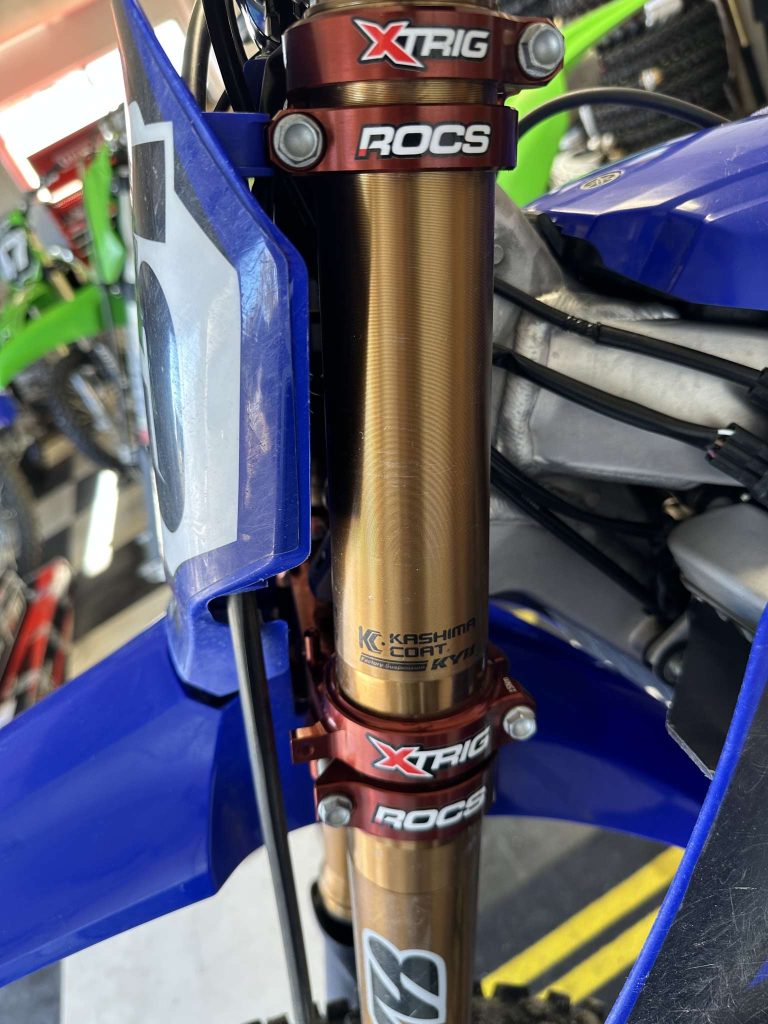
23mm X-Trig: Going to this offset helps slightly on lean angle but doesn’t provide that much more security on straight line. I lost a little initial lean angle front end agility, but minimally gained less front end twitchiness off throttle coming into corners. If you’re looking for just a tiny bit more off throttle stability (think chopping the throttle once setting up for corners) then the 23mm setting is just that. A small amount better (less deflection) when hitting de-cel bumps. This may not be felt by ALL riders unless you’re sensitive to changes.
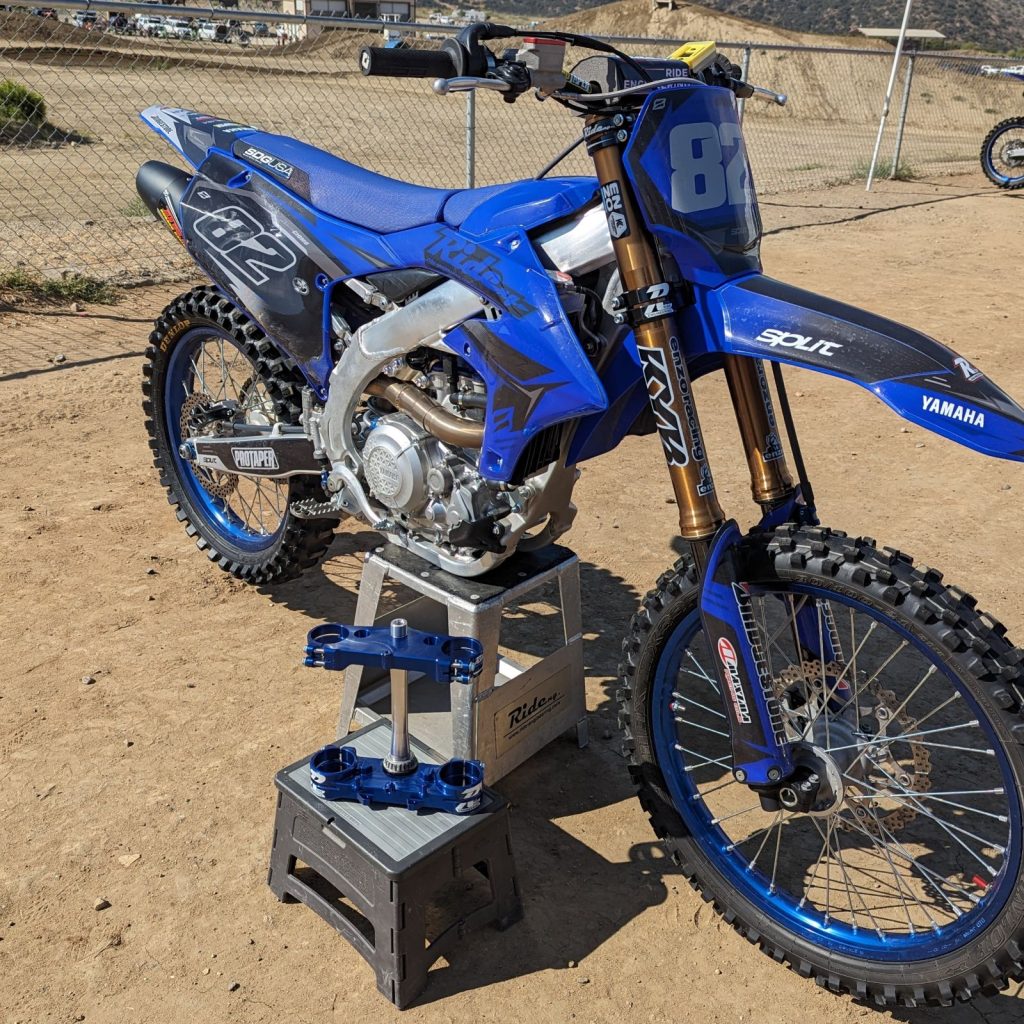
23.5mm Ride Engineering: Sure the difference is only .5mm from the ROCS 23mm set up, but to me this set up is better if you’re looking for extra security when cutting across the track under lean. To me I feel like there is a larger front tire contact patch feel when deciding to make sudden line changes or if a rut gets a hook in it (compared to X-Trig 23 or 24mm). I feel like the YZ450F is more balanced when loading the fork in these situations with the fork height at 3mm. I feel like there is less weight on the front end (fork low feeling) yet I have more front end traction under lean in area 1 and 3 of corners. Off throttle coming into corners the YZ450F doesn’t get that fast twitch/headshake feel nearly as much and the positivity of the front end from on/off throttle gives the 2023 chassis more balance. If you run the Ride Engineering 23.5mm offset split triple clamps you can expect more front end feel as well as less rigidity from this clamp compared to X-Trig. The rigidity is only minimal compared to stock and I personally loved the feel of the Yamaha once these were installed.
24mm X-Trig: Simply put, I got a more of a positive front end without the light, hunt and peck front end feeling that I got with the stock clamp and 3mm fork height set up. Unlike last year when I tried the ROCS on the 22 chassis, I didn’t get a huge gain in harshness on bump absorption feel (on the 23). The 24mm ROCS clamp on the 23 YZ450F gave me a firmer feel on bump absorption but I really liked the way the clamp helped the slight twitch when I chopped the throttle to enter corners (at speed). The ROCS gave me a more planted front end feel on initial de-cel and allowed me a more precise lean angle feel in area three of corners (but not quite as good as the Ride Engineering clamps). So what is the trade off Keefer? The trade off was a slightly firmer slap down feel off jumps, but to me the ROCS 24mm clamp setting gave some needed stability right where I needed it from the YZ450F (Initial de-cel, while setting up for corners). So what’s. the catch here? The catch here is that X-Trig doesn’t sell a 24mm offset. You will have to purchase an offset steering stem with the 23/25mm ROCS set up. You can do so at technicaltouchusa.com
25mm X-Trig: I feel like this setting gave me too much of a lazy side to side movement feel and even with the fork up to 7mm, I didn’t like the way the YZ450F cornered nearly as much as the other settings. The front end felt vague/light and it didn’t warrant enough comfort/stability for the trade off in cornering for moto tracks. Straight line stability was well perceived however as the YZ450F gave me a less harsh feel coming into corners with big de-cel bumps or when accelerating down long straights with square edge. If I were riding faster type GP races or riding long sand tracks, the 25mm setting (with the fork height at 4mm) felt the most secure at speeds.
So Which Setting Is Best?
To me the 23.5mm Ride Engineering setting gave me the most comfort/stability that I want from this 23/24 YZ450F chassis. This was actually a BIG surprise to me! Last time I tried a Yamaha clamp made by Ride Engineering, it was too firm/rigid. Ride Engineering went to work to redesign the webbing of the clamp for 2023 to make it more friendly to the hands/feel on bumps. The X-Trig ROCS was as good for stability/cornering but had more rigidity than the Ride clamps. Adjusting the desired fork height with these different offsets is key but once you dial the height in the Yamaha becomes much more friendly to the rider when pushing. I like that I can go to either of these offsets and I get some of that 22 YZ450F feel back as well as keep the better cornering character of the 23/24 model. You will get a very small amount of a firmer feel with the Ride Engineering clamps (compared to stock) through your hands, but the difference is minimal. To me I would gladly take a slightly stiffer feel through my bars and get more stability that have a softer feel in my hands and have a twitchy motorcycle. The ROCS stiffness is noticeable (compared to stock) and that was borderline too stiff if the track was hard pack/choppy.
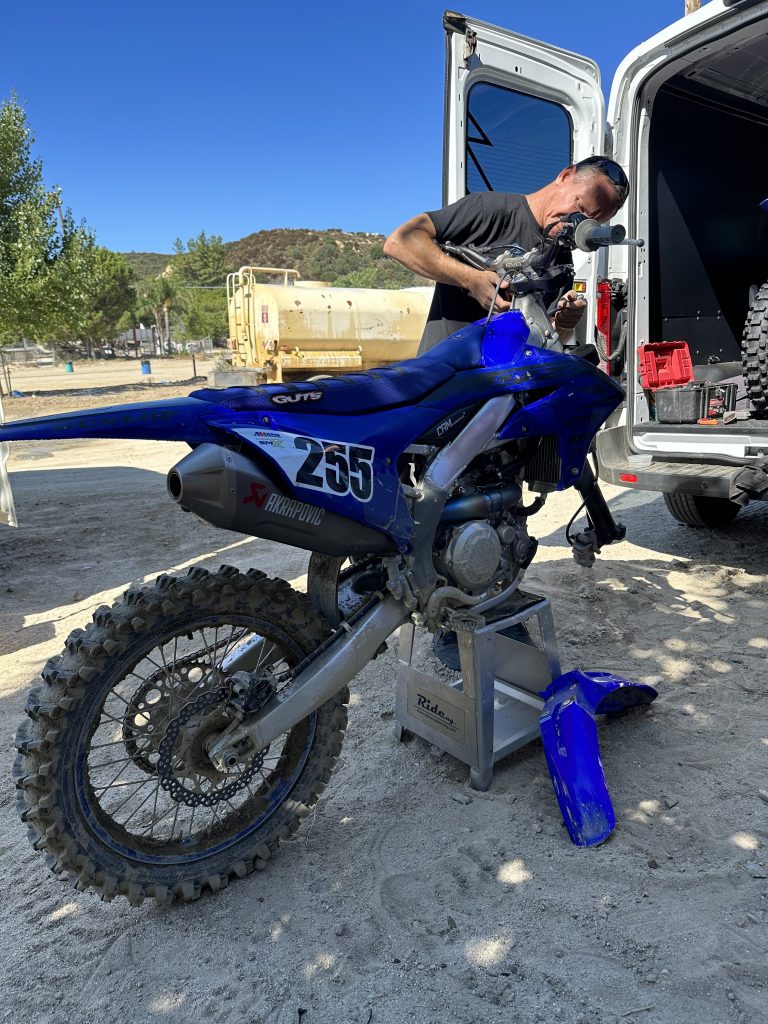
Recommended Fork Height Settings By Offset:
23mm offset: 3mm
23.5mm offset: 3-3.5mm
24mm offset: 4mm
25mm offset: 4mm
If you’re looking for increased front end feel in area 1-2, look at going up 1mm on fork height. Recommended sag for these offsets still remains at 104-105mm.
Note: Not ALL bikes NEED aftermarket triple clamps. For example, I was fine with the stock clamps on the 2022 YZ250F/450F but with the new chassis Yamaha came out with, I feel there was some room for improvement. Going to a different offset has helped this blue machine calm down on faster tracks. -KK
If you have any questions about this test, please feel free to email me at kris@keeferinctesting.com

